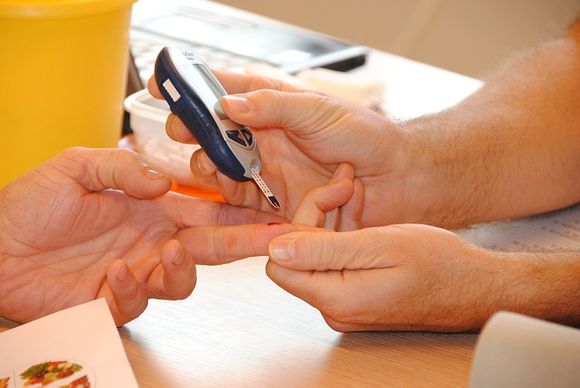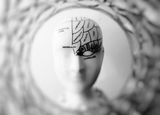Author: Sylvia Marinova, PhD student in the Genomic Stability Laboratory at BAS
Diabetes mellitus is a chronic disease that leads to a high level of glucose in the blood. It is also known as diabetes or simply as diabetes and is very common. As of 2019, almost half a billion patients have been reported to have diabetes, representing as many as 9.3% of the world's population.
Diabetes has three most common types: type 1 diabetes, type 2 diabetes and gestational diabetes (during pregnancy). In this article we will look in more detail at type 2 diabetes - causes, symptoms, treatment, lifestyle.
Type 2 diabetes - what is it

Of the three main types of diabetes, type 2 is the most common - about 90% of cases. It is characterized by impaired metabolism and high blood glucose levels. But what does that mean?
Glucose, also known in laboratory diagnostics as blood sugar, is our main source of energy. It comes from the breakdown of the food and drink we take through our digestive system, and with the help of blood it spreads to all other cells of our body, providing them with the energy they need to secure their functions.
Normally, our body regulates how much glucose is in the blood and what to enter the cells using two hormones with the opposite function - insulin and glucagon. They are produced by special cells in the pancreas. Insulin is used by the body as a signal for glucose to enter the blood into the cells (lowers blood sugar), and glucagon to the contrary - signals the glucose to exit from cells to the blood (increases blood sugar).
With diabetes, the body has a problem with the transfer of glucose from the blood into the cells, thus they remain in a power deficit, even though it is available in the blood. In type 2, this is due to the fact that our body does not respond well enough to the hormone insulin.

By not fully understood mechanisms, our cells lower their sensitivity to it - a condition called insulin resistance. With it, the level of glucose in the blood is increased, but not enough to classify it as type 2 diabetes. At this stage, the body's natural response is to increase insulin production, trying to normalize the amount of glucose in the blood.
However, as the disease progresses, the level of insulin produced drops again, and the function of the pancreas is often disturbed. The result is hyperglycemia, as glucose in the blood is high enough for the disease to be defined as type 2 diabetes mellitus.
Who can get type 2 diabetes
Type 2 diabetes is usually observed in people over 45 years of age. However, it is increasingly common in children, adolescents and young individuals due to overweight and lack of physical activity.
Risk factors for type 2 diabetes
The risk factors for the onset of type 2 diabetes are associated with two main aspects. It is known that if you have close relatives that suffer from type 2 diabetes significantly increases the risk that we ourselves develop it and there are numerous associated genes with the disease.
The other main group of risk factors is related to lifestyle [ref. 3], as well as with some chronic diseases.
In general, risk factors are:
- Low physical activity
- Obesity
- Unhealthy diet
- Hereditary predisposition
- High blood pressure
- Age
- Chronic pancreatitis
- Polycystic ovary syndrome
- Smoking

It is interesting to note that obesity contributes to 55% [ref. 4] of diabetes cases in the United States, according to studies by the Centers for Disease Control and Prevention [ref. 5]. Moreover, obesity itself is often associated with genetic predisposition, but this does not mean that all overweight people develop diabetes.
Genetic causes of type 2 diabetes
The causes of type 2 diabetes are complex. This condition is the result of a combination of genetic factors and lifestyle, some of which have not been established.
Studies have found at least 150 variations of DNA which are linked to the risk of developing type 2 diabetes. Most of these changes are common and present in both people with diabetes and those without. Each person has some variations that increase the risk and others that reduce the risk. It is the combination of these changes that helps determine the likelihood of a person developing the disease.
It is believed that the majority of genetic variations associated with type 2 diabetes work by finely changing the amount, time and location of gene activity (expression). These changes in expression affect the genes involved in many aspects of type 2 diabetes, including the development and function of beta-cells in the pancreas, the release and processing of insulin and the sensitivity of cells to the effects of insulin. However, for many of the variants that have been associated with type 2 diabetes, the mechanism by which they contribute to the risk of disease is unknown. [ref. 8]
What are the symptoms of type 2 diabetes mellitus
Symptoms by which we can recognize type 2 diabetes include:
- strong thirst
- frequent urination
- constant hunger
- fatigue
- blurred vision
- dark spots on the skin
- unexplained weight loss
- slow healing of wounds, etc.
What can you do?
Your health depends on you
Unlike most diseases, type 2 diabetes can be managed primarily by yourselve. For some patients, it is enough to have an appropriate lifestyle. Systematic control of the condition and regular visit to the endocrinologist is necessary. A carefully prepared diet should also be followed and foods should be taken that do not lead to a sharp rise in blood sugar.
It is especially important to be cautious with the consumption of carbohydrates, and it is best to consult with a doctor or nutritionist what are the right solutions for your diet. It is also extremely important to maintain a healthy weight, to be more physically active, to live with as little stress as possible.
The most commonly used starting medicine is metformin
Some people also need to take medicines prescribed by a physician. There are different approaches and a diverse range of oral and injectable medications that are used to treat diabetes. What medicine you might need to take depends on your overall condition, as well as the presence of other diseases.
The most commonly used starting medicine is metformin [ref. 6]. It is not expensive and is used to reduce the amount of blood sugar. Due to side effects it may cause, it is important to inform your doctor about concomitant diseases.
Science and medicine are constantly evolving and new therapies are being sought
For patients diagnosed with type 2 diabetes, maintaining a high quality of life and observing a good diet and training regime is essential, regardless of whether additional medication is needed.
In addition, science and medicine are constantly evolving and new therapies with fewer side effectsare being sought. One such promising study was published in the journal Nature Medicine in late 2019 [ref. 7]. It is the first step towards a new therapy that could prevent the destruction of insulin-producing cells in the pancreas in patients with type 2 diabetes.
Alternative methods for treating diabetes
Plant-based therapies for which some studies have been shown to have antidiabetic properties include [ref. 9]:
- Aloe Vera
- Cranberry extract (Vaccinium macrocarpon)
- Cinnamon (Cinnamomum)
- Fenugreek (Trigonella foenum-graecum)
- Ginger (Zingiber officinale)
- Okra (Abelmoschus esculentus)
Although such therapies are commonly used in Ayurvedic and Oriental medicine to treat serious conditions such as diabetes, many health experts in the west remain skeptical of their reported medical benefits.
In fact, since some herbs, vitamins and supplements may interact with diabetes drugs (including insulin) and increase their hypoglycemic effects, the use of natural therapies can lower blood sugar to dangerously low levels and increase the risk of other complications of diabetes.
Whatever your main reasons for using these specific herbs, you should always discuss your plans with your doctor first to make sure that they are safe for your condition and together determine the appropriate dose!
Read more about diabetes here:








